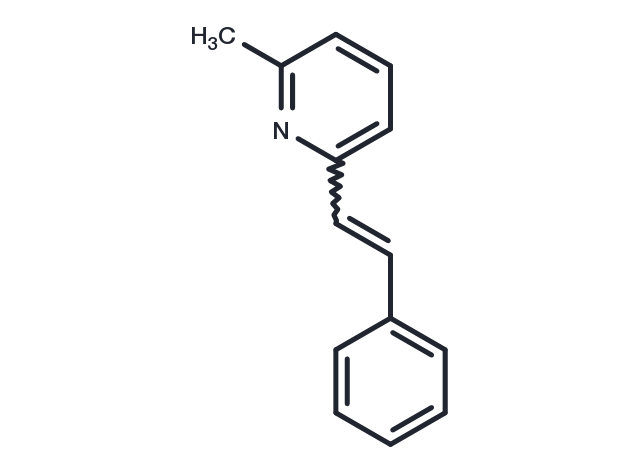Powder: -20°C for 3 years | In solvent: -80°C for 1 year


(E/Z)-SIB-1893 (SIB 1893) is the racemate of (E)-SIB-1893 and (Z)-SIB-1893. (E)-SIB-1893 is a selective, noncompetitive mGluR5 antagonist with anticonvulsant activity .

| Pack Size | Availability | Price/USD | Quantity |
|---|---|---|---|
| 5 mg | In stock | $ 67.00 | |
| 10 mg | In stock | $ 118.00 | |
| 25 mg | In stock | $ 247.00 | |
| 50 mg | In stock | $ 392.00 | |
| 100 mg | In stock | $ 592.00 | |
| 500 mg | In stock | $ 1,280.00 |

| Description | (E/Z)-SIB-1893 (SIB 1893) is the racemate of (E)-SIB-1893 and (Z)-SIB-1893. (E)-SIB-1893 is a selective, noncompetitive mGluR5 antagonist with anticonvulsant activity . |
| In vitro | We investigated the role of mGluR5 in acute NMDA and glutamate-mediated neurodegeneration in cultured rat cortical cells using the mGluR5 antagonists SIB-1893 (20 or 200 μM; rat cortical cells) and found that they provide significant protection.[4] |
| In vivo |
SIB-1893 (10, 20, and 30 mg/kg; i.p.; 0-180 min) considerably lowered the body temperature in animals at 90, 120, and 180 min after its systemic injection of 30 mg/kg. In contrast, the drug at 10 and 20 mg/kg remained without effect on the body temperature in rats. Based on our preclinical study, one can conclude that SIB-1893 produces hypothermia in freely moving rats in a dose-dependent manner.[1] SIB 1893 (10 and 20 mg/kg; mice; i.p.) did not affect the protective action of valproate, ethosuximide, phenobarbital, and clonazepam in this test. The combined treatment of SIB 1893 with conventional antiepileptic drugs did not lead to motor impairment. Long-term memory disturbances were observed only in the case of the combination of SIB 1893 with phenobarbital.[2] |
| Synonyms | SIB 1893 |
| Molecular Weight | 195.26 |
| Formula | C14H13N |
| CAS No. | 6266-99-5 |
Powder: -20°C for 3 years | In solvent: -80°C for 1 year
DMSO: 90.0 mg/mL (460.9 mM), Sonication is recommended.
You can also refer to dose conversion for different animals. More
bottom
Please see Inhibitor Handling Instructions for more frequently ask questions. Topics include: how to prepare stock solutions, how to store products, and cautions on cell-based assays & animal experiments, etc.
(E/Z)-SIB-1893 6266-99-5 Neuroscience Others GluR SIB 1893 (E/Z)-SIB1893 (E/Z)-SIB 1893 SIB1893 SIB-1893 inhibitor inhibit
